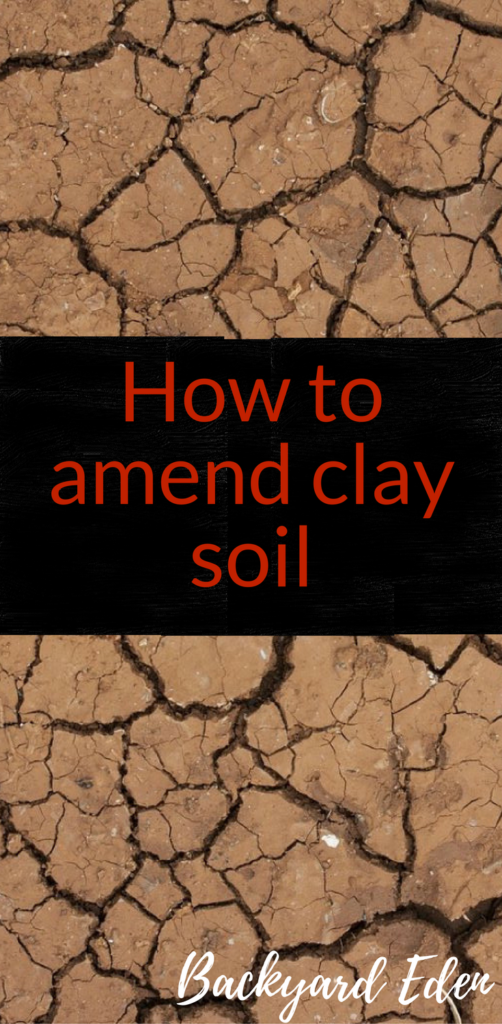How to Amend Clay Soil
Gardening can be difficult when your garden is mostly clay soil. Clay soil is challenging because it is dense and holds a lot of moisture. It looks like nothing would grow in it. Most people blame the builders for removing the quality soil during the home construction. However, with a bit of effort and patience, you will be able to fix this situation. This is a common problem among gardeners that you can avoid if you know how to amend clay soil!
When we moved into our new house a few years ago, we quickly found that the entire area where the house and yard was heavy clay soil. This was the worst type of clay imaginable. When it rained it held water and then upon drying out would crack. These cracks can be bad for many reasons.
When we installed the first of our garden at our new house, we chose to put in raised beds instead of planting directly into the ground. Raised beds are a great way to combat poor draining soil.
We started by double digging beneath each of the raised beds to about 12 inches. We mixed in a healthy amount of amendments and organic fertilizer.
How to amend clay soil
1. How to get started
Even the most experienced gardeners can struggle with how to amend clay soil. The first step of finding out the right solution is to do a soil test. A soil test will determine soil pH as well as the nutrient levels in the soil. In any case, you will see the state of your soil and the important ingredients you may need to add.
Soil structure
Another important thing to understand is the soil texture. It’s physical consistency is sand, silt and clay. The amount of these particles will define the fertilizers or amendments you will need to add to correct the soil composition.
If you have a small amount of clay in your soil it means that your soil is lighter and better drained. If you have a lot of clay in your garden soil then it means that it is more dense and holds more water.
2. How to amend
The best soil structure provides both good drainage and retaining moisture. This is possible with the addition of organic matter.
This can be compost, peat moss, composted manure and other organic matter. With the addition of such matter, the soil makes a good breeding ground of microbes.
They feed on decomposing organic matter and produce a byproduct which improves the soil structure and increases the pore space. One useful product, often recommended by the experts of garden maintenance is gypsum. It is a calcium sulphate substance that increases the pore space. It is also good for removing any salt build-ups.
3. An Example of a Good Soil Amendment
Your method of choice for amending the heavy clay soils in your garden is to include the following soil-improving products:
• Compost – spread 2″ thick over the area to be planted;
• Finely ground pine bark (sold as Pine Fines)- spread 2″ thick over the area to be planted;
• Gypsum – 10 lbs. Per 100 square feet;
You should utilize a tilling machine to successfully blend the substances in it. Try to till as deeply as possible. Sand is another good option, but you will need a serious quantity. Depending on your soil test results you will need to add lime to raise the soil pH or iron sulphate to lower it. Fertilizer should only be put if the quantity of nutrients is low.
If you like this article on how to amend clay soil, please share it on social media and with friends. For all the latest recipes, container gardening tips and growing guides subscribe to our newsletter in sidebar.
Also, check out our article on What is container gardening? or Best Herbs to Grow!
Be sure to Like us on Facebook and Follow us on Instagram, Twitter, and Pinterest!






